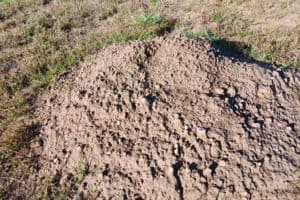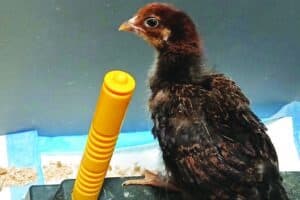Longtime local journalist Bill Radford and his wife, Margaret, live on 5 acres in the Falcon area with ducks, chickens, rabbits, dogs, cats, two noisy parrots, goats and two horses. Contact Bill at billradford3@gmail.com
This month, we say goodbye to winter and hello to spring.Of course, with springtime in the Rockies, we could still have some healthy doses of winter weather. The three-month outlook, through April, from the National Weather Service’s Climate Prediction Center shows both above-normal temperatures and above-normal precipitation are likely in southern Colorado. Any moisture is welcome after last year’s hot, dry winter and spring. The state so far this year is seeing a healthy snowpack compared to last year. And while we’re awaiting some hopefully huge springtime dumps of snow, we’ve at least had some snow this winter. (Though it is nearly 60 degrees as I write this.)Which brings me to one of two wintertime questions:How do snowdrifts form? Since moving to the prairie, I’ve been fascinated by the pattern of drifts. A storm in late January was a typical example: Parts of our property remained bare while snow piled up in huge drifts elsewhere. A neighbor used his tractor to dig a path to the garage for us; I had to do some significant digging to open a path for the dogs to get out on the south side of the house.Snowdrifts, of course, are the result of snow and wind, just as sand dunes are carved in the sand by wind.”Wind-carried snow will not form drifts unless an obstacle is encountered,” according to an article in ìWisconsin Natural Resourcesî magazine. “Any bump in its path will do, big or little. The obstacle deflects the air flow, increasing or decreasing its speed. The obstacle’s shape, size and position relative to the prevailing wind determine the shape and location of a snowdrift.”An article on “Wind and Snow Control Around the Farm” from Purdue University’s Cooperative Extension Service delves into wind dynamics: “As wind slams into a solid fence, it is either forced up and over the obstacle or around it. Air pressure increases on the upwind (windward) side, and a slight vacuum is created on the downwind (leeward) side. As the wind is forced over the top of this solid barrier, its velocity increases. After crossing the top of the barrier, the vacuum created on the downwind side causes air turbulence, which dissipates the wind’s energy. The wind no longer retains enough energy and velocity to carry a snow load; therefore, the snow drops out.”So thatís why, for example, north winds dump snow mostly on the south side of our house. A line of lilacs and trees, meanwhile, provide a living snow fence between the house and the barn ó meaning that with a decent amount of snow, I can count on some digging to get to the barn.On to question No. 2: How cold is too cold for our critters? We rang in 2019 with sub-zero temperatures at night, but this being Colorado, a few days later we had almost springtime temps. We blanketed the horses for a couple of nights during that brief cold snap but didn’t have to worry about them getting dependent on the blankets.When the polar vortex brought punishing temperatures well-below zero to the eastern part of the country later in the month, though, I wondered how livestock in those states fared. Pet owners are told to bring their animals in during such cold, but there’s no room in our house for our horses, goats and chickens ó much as some of them might like it.The American Veterinary Medical Association urges “appropriate shelter from the elements” for those outside animals. “Livestock can generally tolerate cold temperatures, but wind, rain, or snow will require a greater expenditure of calories,î according to the association’s website. “With that in mind, be sure they have a way to get out of the elements, especially the wind. Blankets can help protect horses, but a structural shelter with proper ventilation and dry bedding is the best method of protection. If you do blanket your horses, be sure to check underneath often for signs of injury, infection, or malnutrition.”Access to fresh water is also critical. We have heated water bowls for the ducks, chickens and rabbits, who all live in outdoor enclosures but also have shelters; and we have heaters in the water troughs for horses and goats, who call the barn home. We also throw extra hay to the horses and goats when the temperature drops to a certain point.”Besides taking shelter, livestock keep warm by expending energy, which means they need to consume enough calories to heat themselves,” as stated by the AVMA. “This may mean increasing the amount of feed available to your animals, and/or increasing the quality of feed. Very young, very old, or sick animals will typically have additional nutritional needs during the winter compared to healthy, middle-aged animals.”





